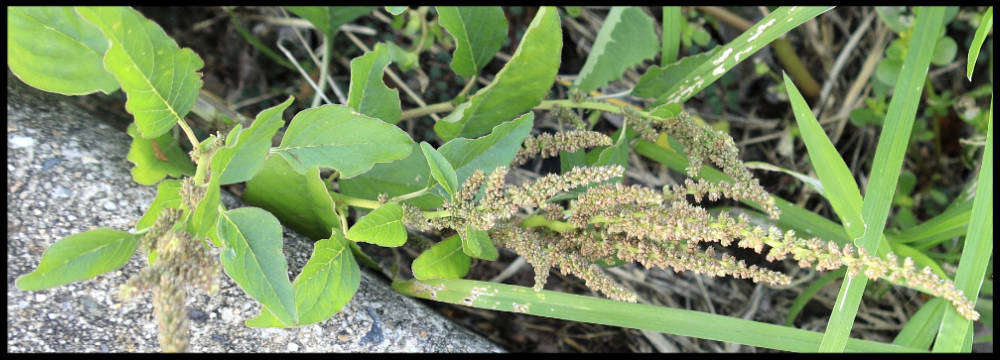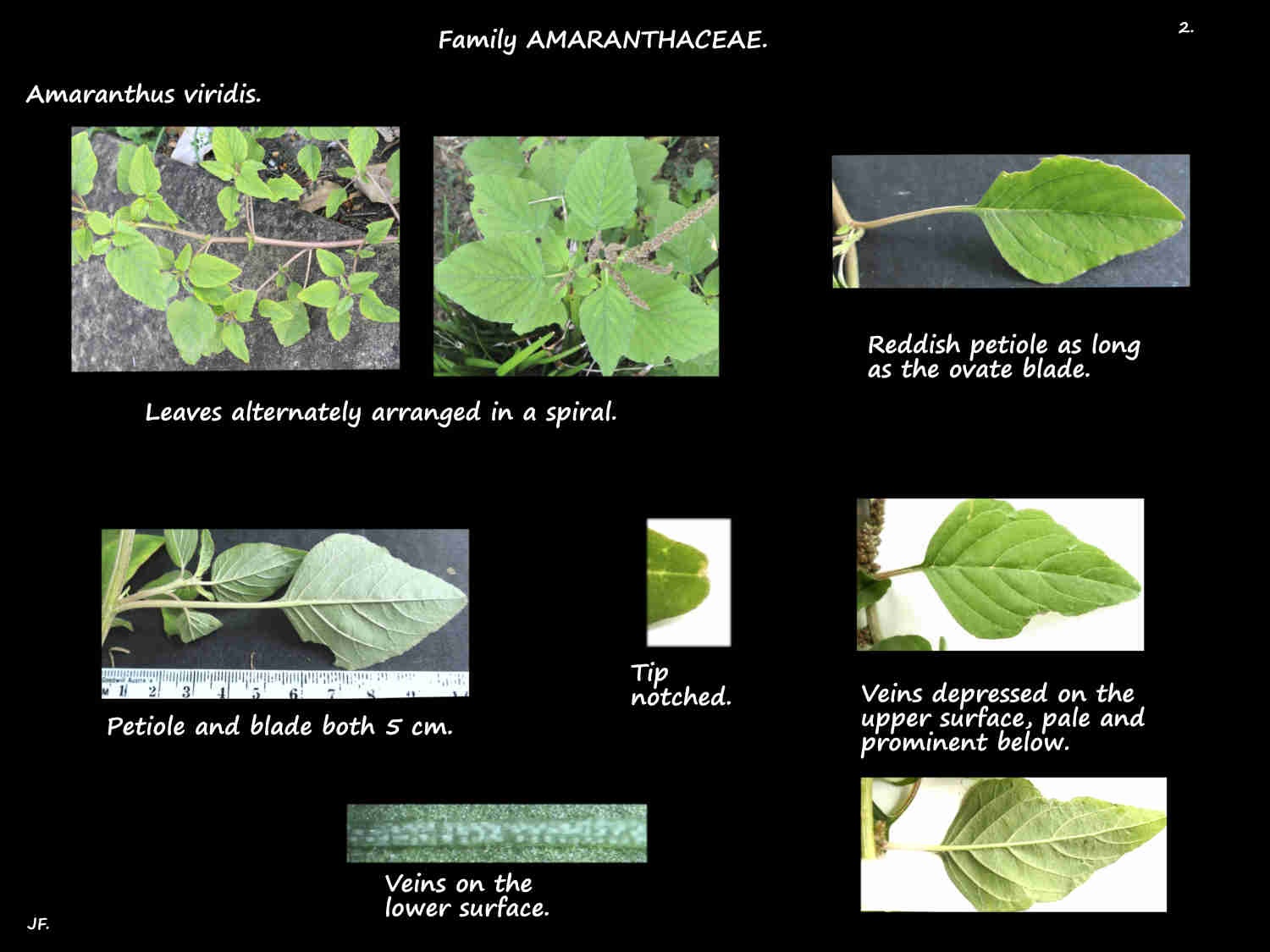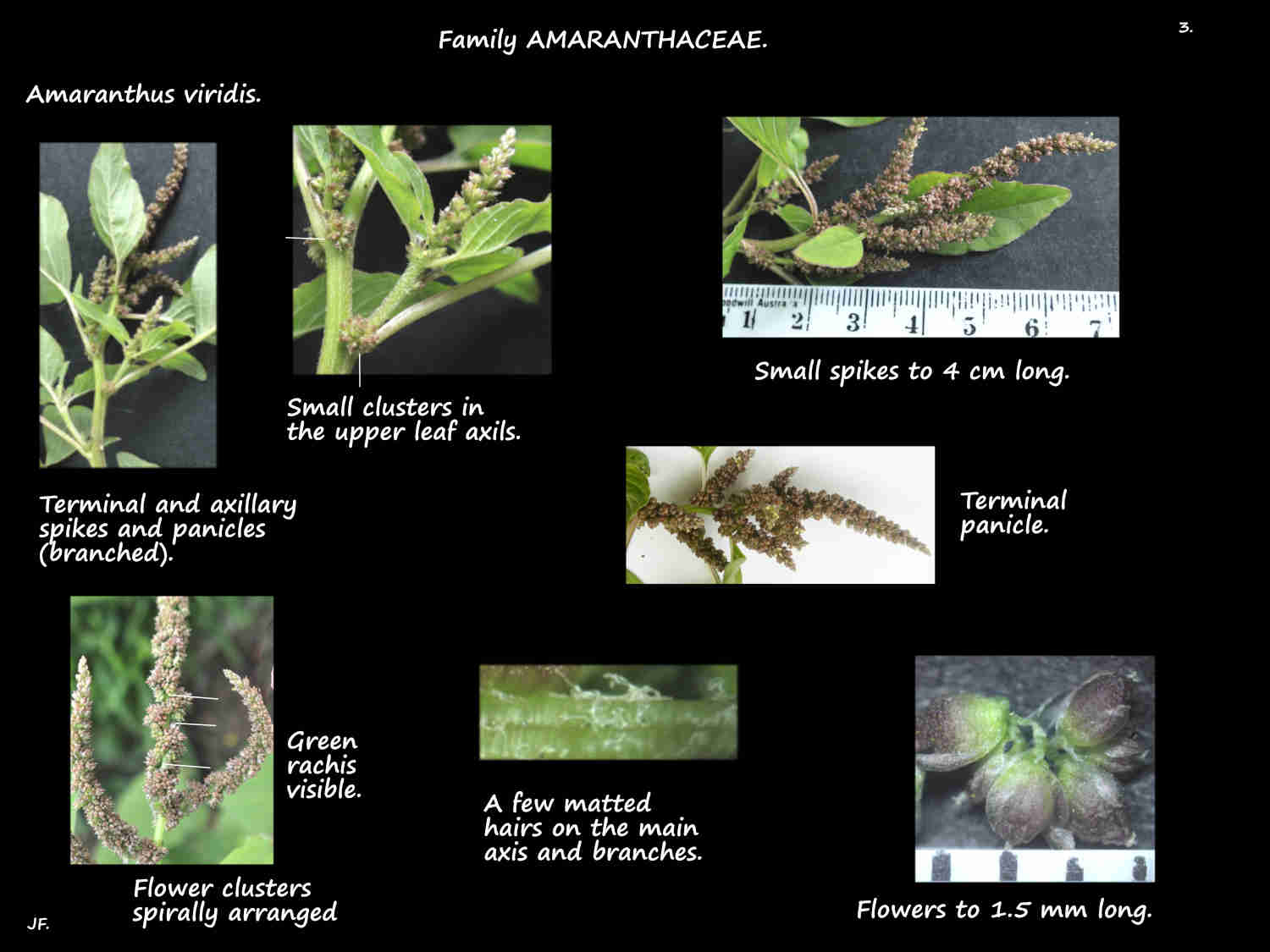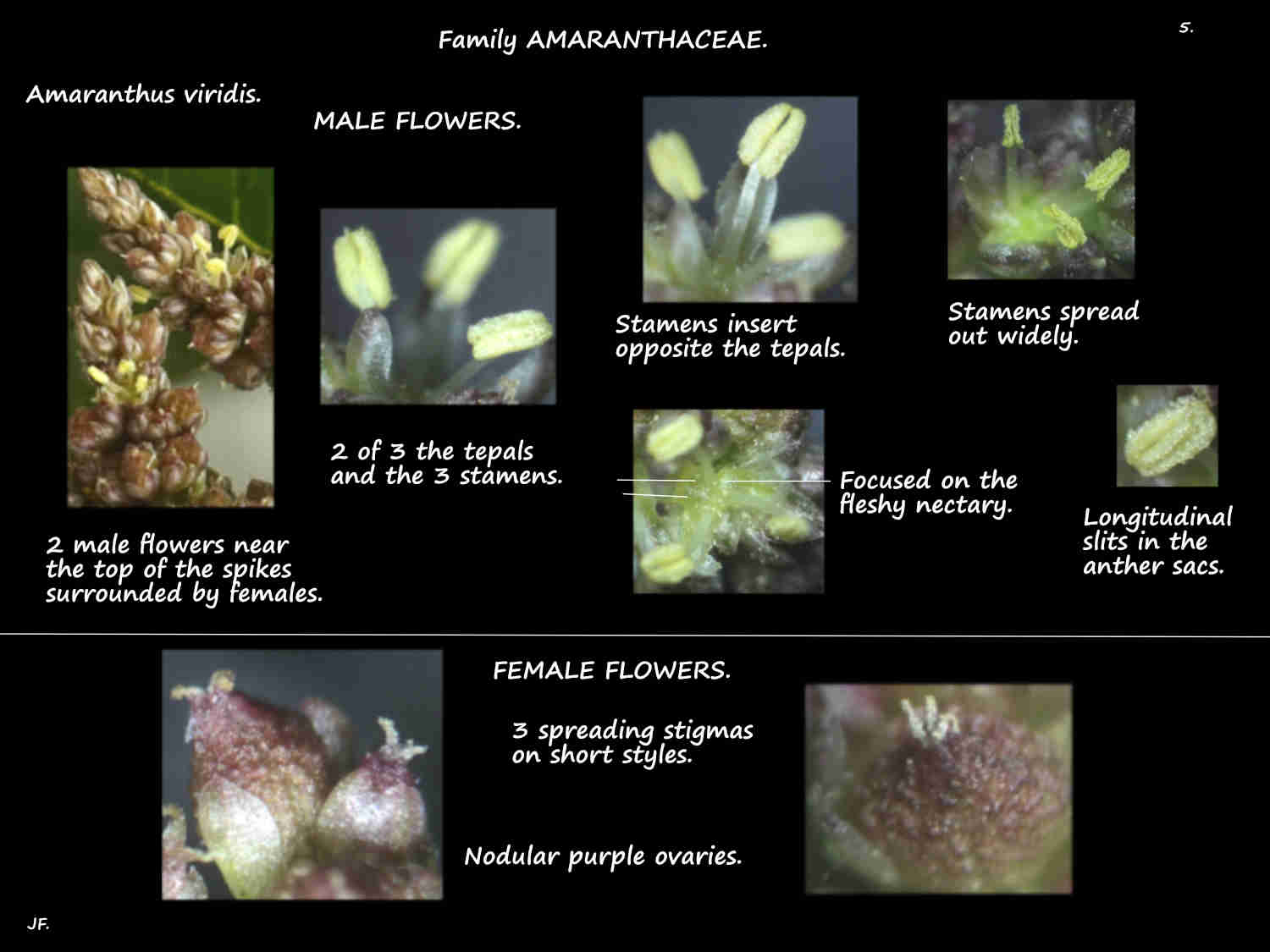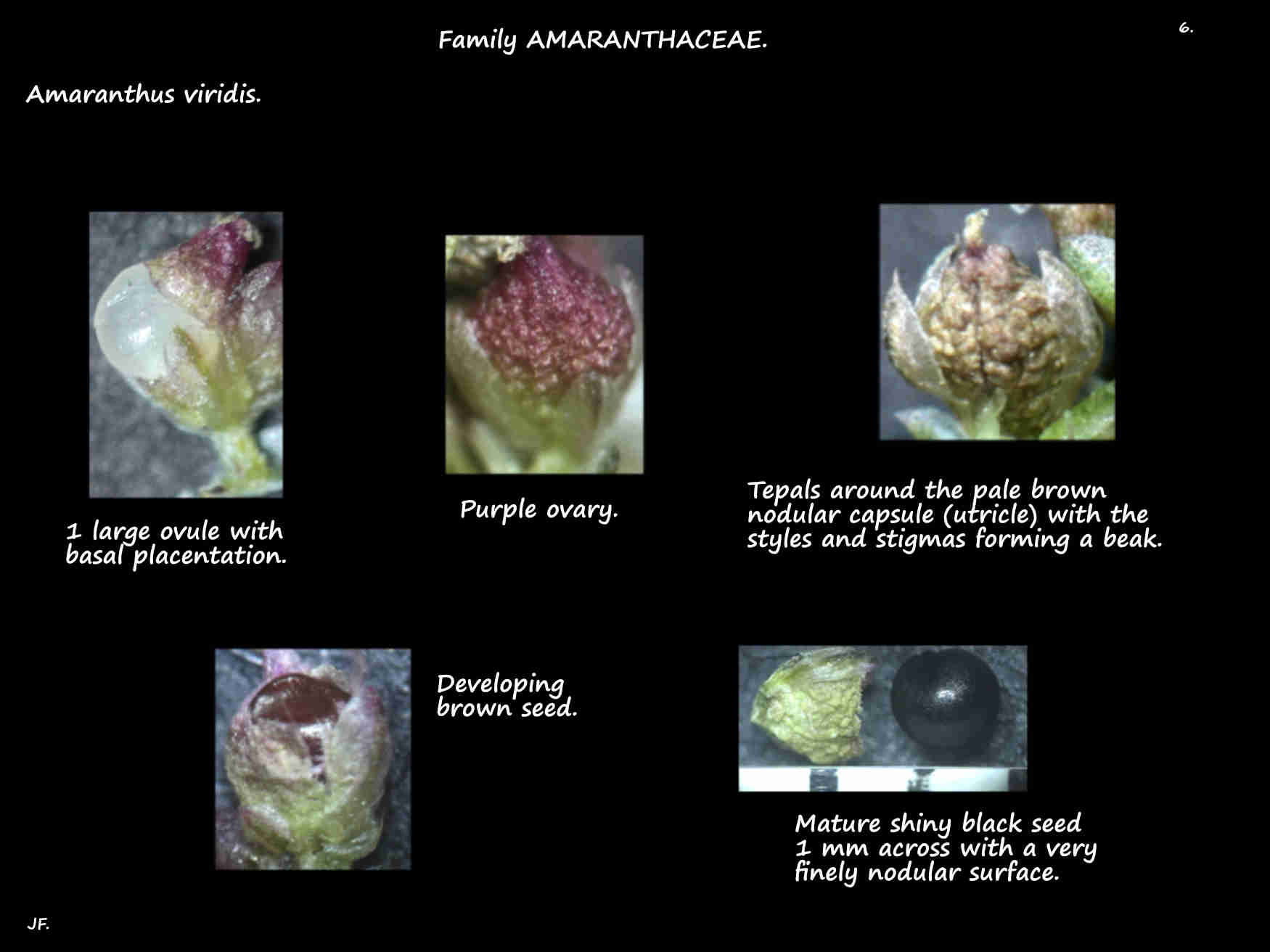Amaranthus viridis.
Green or Slender Amaranth is also seen as Amaranthus gracilis.
The common weed is widely naturalised in S.E. Queensland.
The annual herbs are mostly around 40 to 75 cm high but some can be up to 1 m.
With few to many branches the stems can be erect or lie along the ground then curve up.
Stems, up to 5 mm thick are angled and often have purple lines down them.
There may be a few short or long simple hairs mainly towards the top of the plant.
Alternately arranged leaves are on a petiole 5 to 6 (10) cm long that can be longer than the blade.
The ovate, elliptic to triangular blades are mostly around 7 cm long by 5 cm wide. Occasional leaves are up to 15 cm long.
The tip can be pointed, blunt, notched or have a mucro (small abrupt point).
The base is flat or wedge-shaped and the edge smooth.
The upper surface may have a few scattered hairs but there are often long or short hairs on all the veins on the lower surface.
Inflorescences are an erect terminal, sometimes branched spike up to 12 cm long and 5 mm wide.
Dense clusters of small flowers are spirally arranged along the spike.
The rachis (midrib), visible between the clusters has long, short and matted hairs.
There may be additional small clusters in the axils of the upper leaves.
There are bracts at the base of the branches in each cluster and bracteoles under the flowers.
All are pale and membranous with a reddish or greenish midrib that may end in a small point.
Ovate to lance-shaped they are 0.5 to 1 mm long.
Flowers are unisexual with both types on each plant.
On each spike the females greatly outnumber the males.
Flowers have 3 oblong to ovate tepals similar to the bracts and bracteoles but 1 to 2 mm long.
The coloured midribs on them make the flowers look red, green, brown or pink.
Male flowers, towards the top of the spikes have 3 widely spreading stamens.
Female flowers have a superior ovary with 3 stigmas on short styles.
The fruit are a slightly compressed ovoid capsule up to 2 mm long.
The inflated capsules, with a very nodular or wrinkled surface are known as utricles.
The pale brown utricles may not rupture or do so irregularly.
The tepals, and sometimes the bracts and bracteoles remain on the fruit.
Each utricle has a round 1 to 1.5 mm brown to black seed that may be shiny.
J.F.
